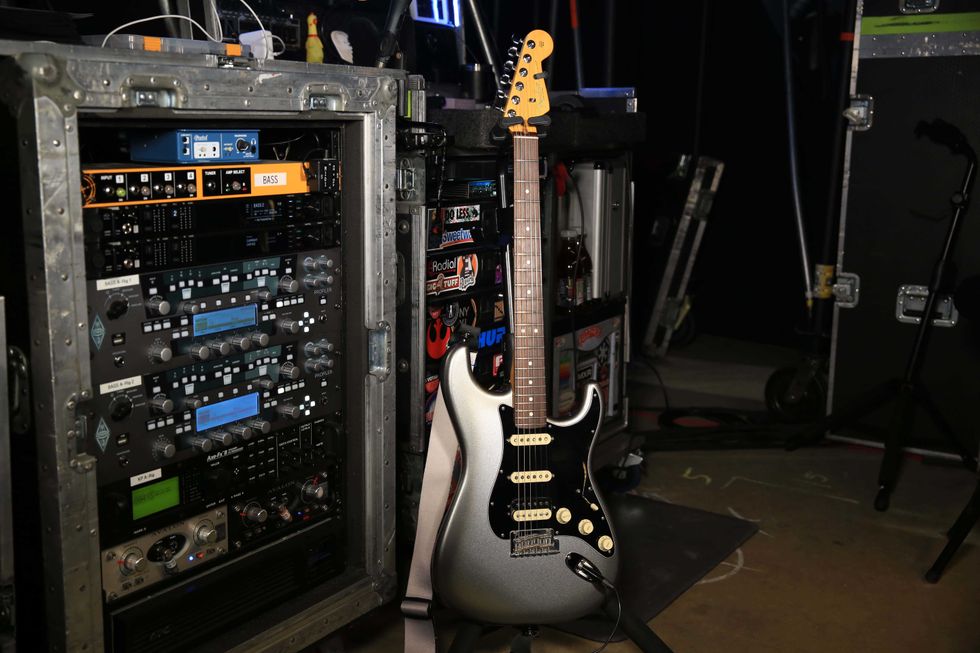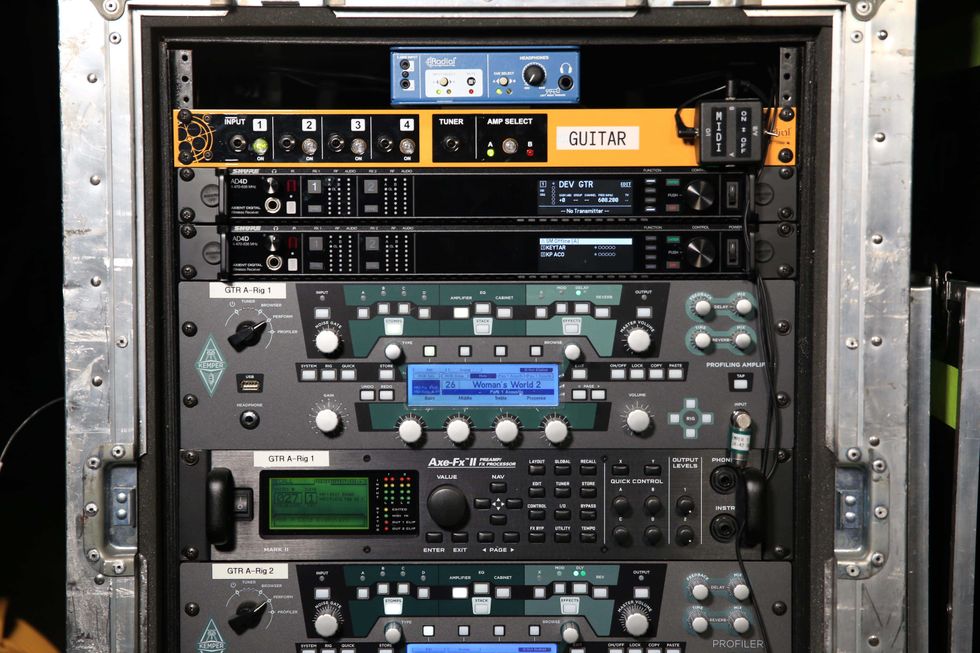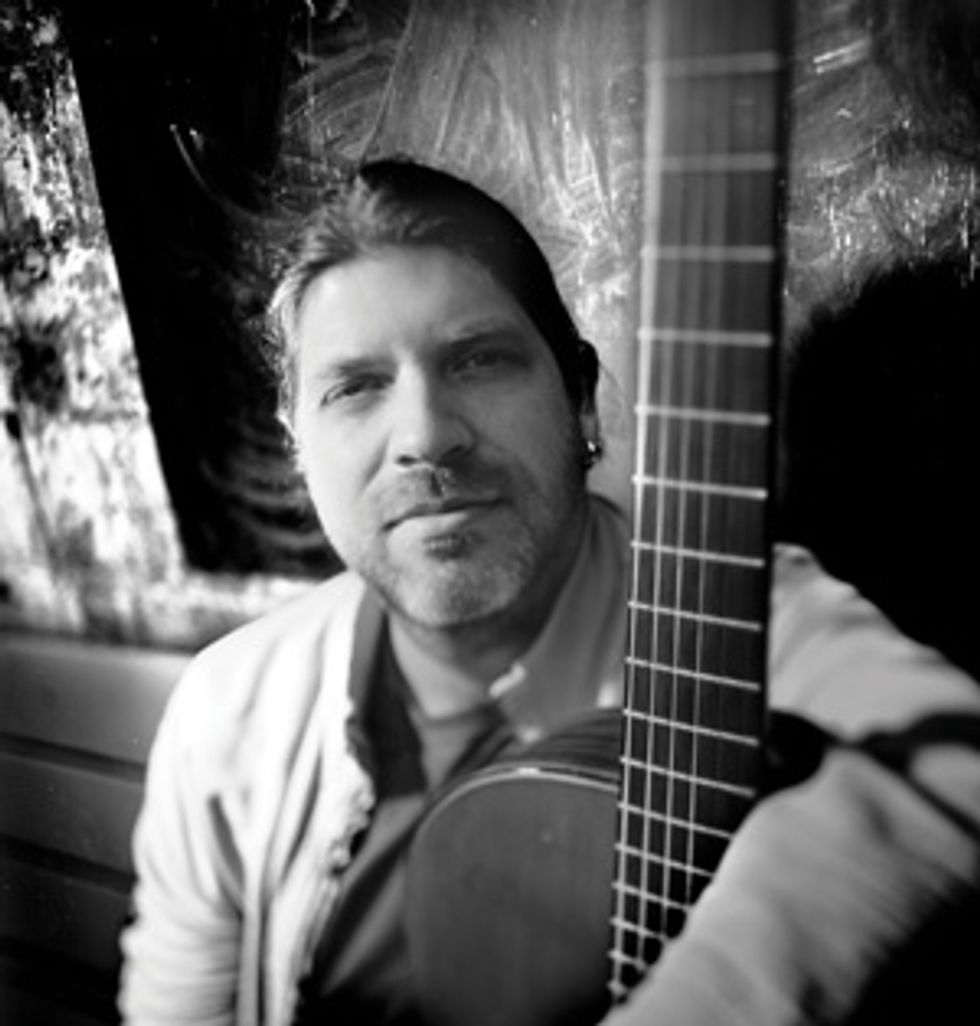
Nestled in the South Slope neighborhood of Brooklyn is Barbés, a quaint performance space that brings a little bit of Paris into the concrete jungle. Owned by two French musicians, Barbés is part listening room, part art film mecca, and the general community center for the area’s artists and musicians. On most Sundays, if you wander into the back room, you can find one of the city’s best-kept musical secrets. Guitarist Stephane Wrembel holds court during this weekly gig and not only pushes the boundaries of what is considered Gypsy jazz, but gathers influences ranging from Greek and North African music to Led Zeppelin and Pink Floyd into an entrancing, yet accessible style.
After graduating from Berklee, Wrembel planted himself in Brooklyn among a healthy community of musicians, artists, and other creative types that bolstered and inspired his muse. Unlike many of his derivative contemporaries, Wrembel pushed the ghost of Django Reinhardt aside when making his latest album, Origins—a collection of fresh and sometimes cinematic acoustic tunes full of precise picking and hummable melodies.
Wrembel’s music caught the ear of Woody Allen (who happens to have a deep love for all things Gypsy jazz), which led to Wrembel’s composition, “Big Brother,” being chosen for the soundtrack to Allen’s Vicky Cristina Barcelona. That partnership continued, and soon after, Allen asked Wrembel to write the theme for Midnight in Paris, which Wrembel performed at the 2012 Academy Awards. It was quite a break for the DIY musician, who reflects on his big year by sharing with us his affinity for stargazing, his compositional style, and why he views the Django community as one big competition.
Tell me about your childhood
in France. When did you first
pick up the guitar?
First, I was playing the
piano. I’m originally from
Fontainebleau–which is the
home of Impressionism. I
studied piano at age 4 and
was classically trained in the
Impressionist style by an
old piano teacher who knew
Debussy, so I was trained in
that old traditional school. I
started playing guitar when I
was 15 and I was playing more
’70s rock like Pink Floyd and
Zeppelin. When I was about
19 or 20 I really wanted to
expand my horizons so I practiced
Django stuff, jazz, Indian
music, African music, and stuff
like that.
Did your parents push you
into music?
I have two sisters, and my mom
really wanted us to play an
instrument. We started with the
piano because that is what she
knew. She wanted us to continue
with an instrument and
when I was 15 I said, “I really
wanted to play the guitar.”
When I was a teenager I really
loved David Gilmour—he is
still my favorite—Frank Zappa,
Jimi Hendrix, and Jimmy Page.
Loved Andy Summers, too.
So Django wasn’t one of your
primary influences when you
were younger?
Django’s music has always been
around, especially because I am
from the area where he settled.
For us, it was just traditional
music, much like bluegrass is
here. It’s always been there but I
never really paid attention to it.
It was only when I studied jazz
and French traditional music that
I really started to discover him.
Did you move to the States
specifically to study music?
I have been fascinated with
the United States since I was a
kid. I always wanted to move
here. It was a childhood dream.
Being a musician, going to
Berklee was another dream
from when I was a teenager.
When I was 26 I got a scholarship
and was able to go get my
tutorings. I concentrated mostly
on jazz and all kinds of world
music. I studied Indian music
there, Western African music,
and Greek music a little bit.
What was it that most interested
you in those types of music?
To me, music is only one
thing—it’s just music.
Different countries approach
the language from different
directions, but they all melt
together at the end. Indian
music is very good for studying
the architecture of rhythm;
you understand rhythm way
better with Indian music. And
their ways of practicing are
amazing. With African music,
they have an amazing rhythm
and the way they use certain
colors of percussion, I can
do on guitar. The jazz music
is very important because it
makes you a more confident
improviser over complicated
chord progressions.
When did you make a choice to
focus more on acoustic music?
I don’t really focus on acoustic
music, it has just been added
to my playing. It was only
really when I discovered Django
that I learned to play acoustic
instruments. If you give me an
electric guitar, I can play like a
real electric guitar player, you
know? It’s just been added to
my arsenal of techniques. I find
more power in the acoustic
instrument than the electric
instrument. It’s also because
that is what’s happening [with
me] now. I also use electric
sometimes, although I haven’t
recorded with it yet but I have
projects for that.
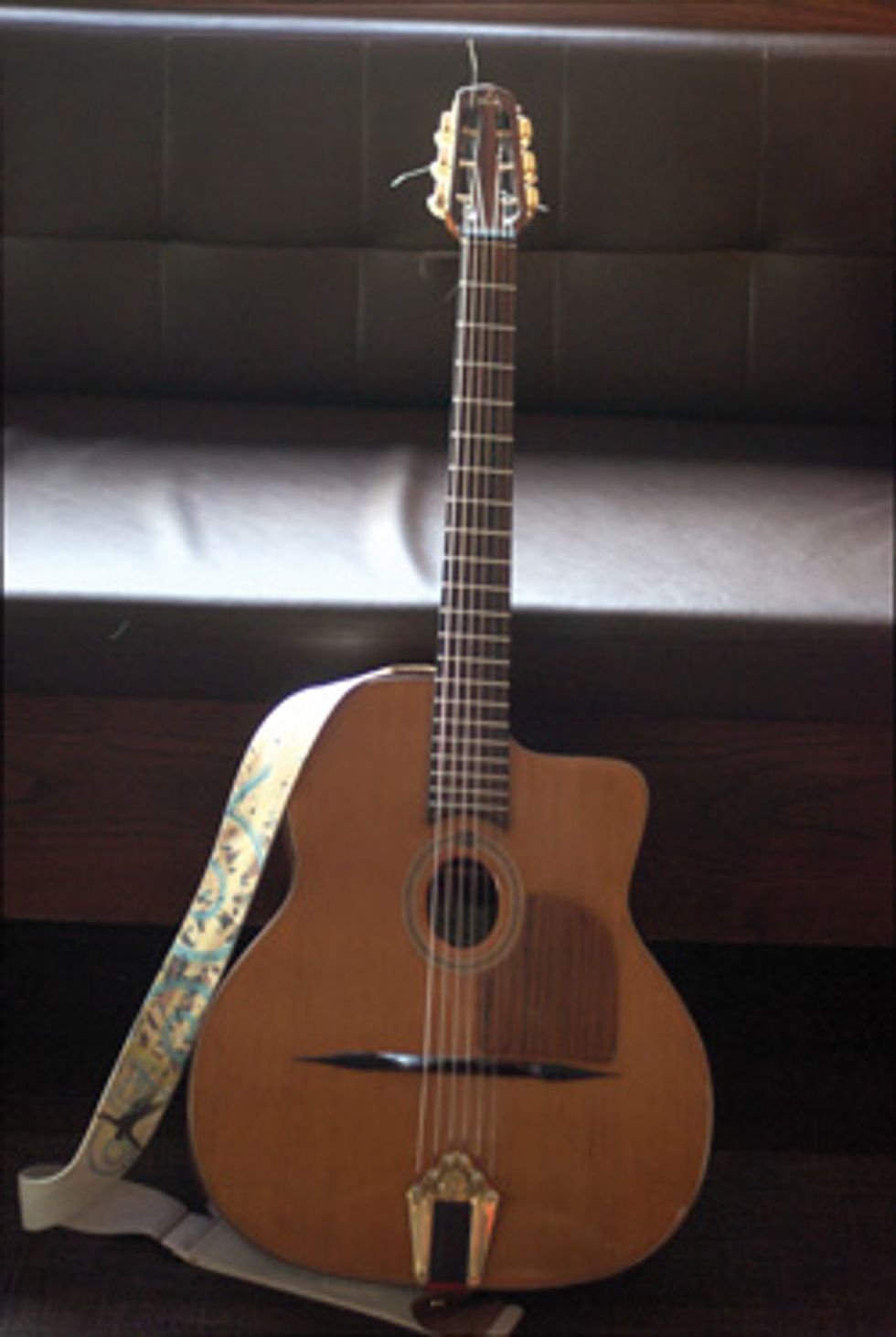
When Luthier Bob Holo first met Stephane Wrembel, the idea of creating a guitar for the picker hadn’t crossed his mind. But then the two spent a night talking about tone and inspiration. “That guitar wouldn’t exist without guys like Stephane. I met Stephane, Adrien Moignard, Mathieu Chatelain, and Gonzalo Bergara at a festival in Boston in the mid- 2000s and it really seemed as if they were starting a rebirth of this music in a ‘new school,’ so to speak,” remembers holo. due to this original approach, holo decided to create the “nouveau” model, while also taking some of Wrembel’s advice to heart.
He was moving more and more toward the acoustic side and we had a long talk one night,” Holo explains. “he told me, ‘Bob, don’t live in the shadow of Django, live in the light of Django. He would want it that way.’ It’s easy to forget that with the familiarity of his music these days and the postbop/ acid/atonal jazz that has come since, but back when Django was playing his music, it was way out there.” The idea stuck with Holo, who was deep into studying the guitars of some of the early master builders.
After analyzing some of the builders who moved from Italy to France in the 1930s— such as Busato, Dimauro, and Bucolo—Holo learned that they had taken inspiration from romantic guitar builders from the previous century. “They cut their teeth in Italy building budget guitars for various companies and then they came to France to build their names, inspired by political freedom and the birth of jazz,” says Holo.
Holo was not only looking at the established masters of the craft for guidance, he also talked with many young artists to see what they seek in a Gypsy-style guitar. “as I talked with these incredible guitarists, they’d always say something like, ‘oh Bob, I played this [vintage maker] and it was so beautiful. It had this [element of tone] and it had that [characteristic of attack or decay] and I was in love, but it was just so hard to play and in the end I’m not sure that the tone would fully translate to modern work.’ Throughout all of this I kept hearing Stephane’s voice: ‘Light of Django ... innovate.’”
The finished version of Wrembel’s nouveau sports a western red cedar top with the back and sides containing a layered mixture of honduran rosewood, walnut, and mahogany. Holo went with a 670 mm scale length and stuck with the honduran rosewood for the fretboard. The guitar was set up with Argentine Savarez .010 strings, but just like Django, he switches out the first string for a .011.
With a background in sound and design, Holo began the journey to understand why these old guitars sounded like they did. He also wanted to incorporate the ideas that modern players were asking for. “I kept building and taking them to festivals and getting feedback,” says Holo. “One year I asked Mathieu Chatelain for his feedback and he said, ‘here’s my feedback: how much do you want for it?’ My jaw must have dropped because he started laughing and said, ‘You should have seen the look on your face just then, but I’m totally serious. How much?’”
Holo opened shop in the Pacific Northwest soon after, and new-school Gypsy players began knocking down his door. “It has been a real-life epiphany working with them to give them the kind of tool they want. It’s incredibly gratifying work.” For more information on Holo’s guitars, visit hologuitar.com.
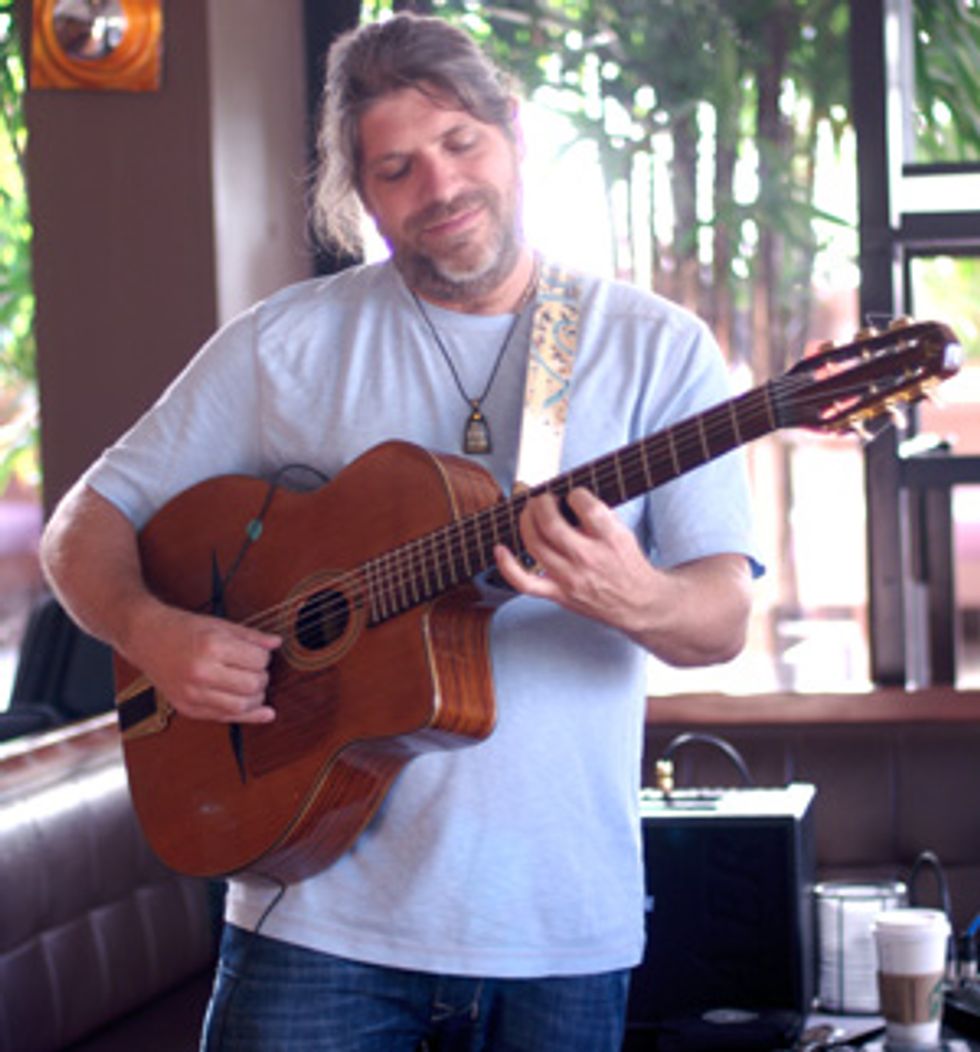
Wrembel plays his Holo Nouveau at the intimate Empire Hotel Rooftop in NYC on June 18, 2012. Photo by Scott Bernstein
What type of projects?
You would be surprised. It’s
really the same thing. That one
style, whether I play electric or
acoustic, it doesn’t really change
much because I play the acoustic
really like an electric player.
But with the acoustic technique
I give out as much power as,
say, a Les Paul through an amp
with distortion.
Do you feel that your technical
approach changes when moving
from acoustic to electric?
It doesn’t really change because
once your technique gets better
you have ways to make the guitar
ring in a very different way.
You can use the sympathetic
ringing of the guitar, which is a
type of control that’s a bit more
advanced. That is something I
couldn’t do before so even when
I am playing a distorted guitar,
I use the sympathetic vibration
of the other strings and it makes
the sound bigger.
Do you use a Django-style
picking technique?
It was completely inspired by
Django and playing the oud.
Can you explain how that
style works?
It’s not only the right hand but
also the left hand. The right
hand doesn’t exist all by itself.
You can’t really talk about one
without the other. Basically,
the thing is you have to press
hard with the left hand on the
strings—that’s very important.
You have to make sure to put
the two hands really together,
which is surprising to say that
but most people don’t. It’s very
hard to have two hands play
well together. There are all
kinds of things. Like you don’t
touch the strings because you
want them to resonate in sympathy
with the rest to create a
natural reverb.
Do you follow a strict alternate
picking technique?
Usually when you change
strings you use a downstroke
as much as possible and you
use more downstrokes than
upstrokes. There’s no real rule.
It’s not as precise as that. It’s
like when you drive. When you
learn to drive, you put your
hands on the wheel and learn
everything internally. After that
you are able to drink a coffee
and drive, so the rule becomes
“drive.” It’s the same thing with
the guitar.
For your latest album, did you
compose specifically for this
project or were these tunes
laying around for a while?
Almost all of the material was
written for this album. “Bistro
Fada” was the song I wrote
for the Woody Allen movie
Midnight in Paris. I remade a
new version for this album,
for sonic reasons and to match
the color of this album. There
is also “Water is Life,” which
was written for my first album
in 2005, but it was a classical
guitar and bass version. We
recorded it more like how we
perform it live with the drums.
Otherwise, everything else was
written for this album.
Speaking of Woody Allen,
how did he approach you to
create the theme for Midnight
in Paris?
The first time he used one of
my songs on his movie [Vicky
Cristina Barcelona], and the second
time his producer called me
and asked if I could compose a
theme for the movie that would
represent the magic of Paris.
Woody tours with his own
band all over the world. Did
you ever get a chance to play
with him?
Nah, I’ve actually never met
him. We talk through his
producer. Once it’s time for
pre-production he is already
onto his next movie or some
other thing. It’s not like we have
time to hang out. Busy guy.
When you are presented with
a compositional “assignment,”
like writing a score, how do
you approach it? Is your process
any different?
Actually, I go blank and move
into a trance state. It just happens.
When it’s time to compose
I get in that mood and it lasts
for a few days and since I can’t
score ideas in my head I throw
the ideas into GarageBand. I
then go back and refine them
and it becomes more architectural
work. For me, it’s very
important to have a mood and
a musical idea. That’s the first
thing. After that, I rework it.
Do your ideas usually begin
with a melody or a chord
progression?
It’s all entangled. Once I have a
rough idea I spend a few hours
to really play around with it—
change chords, move the bridge
around—so many choices. I
usually do that on the spot right
after composing a song.
The track “Tsunami” really
shows the orchestrated, more
scenic influence of movie
scores. What composers do
you listen to for inspiration?
I listen to movie scores a lot.
I listened to a few scores from
Hans Zimmer and I have
checked out the classic ones like
Jaws [John Williams]. A score
that I really love is the one from
Pi [Clint Mansell], and I am
also a big fan of Howard Shore
[Lord of the Rings, Hugo].
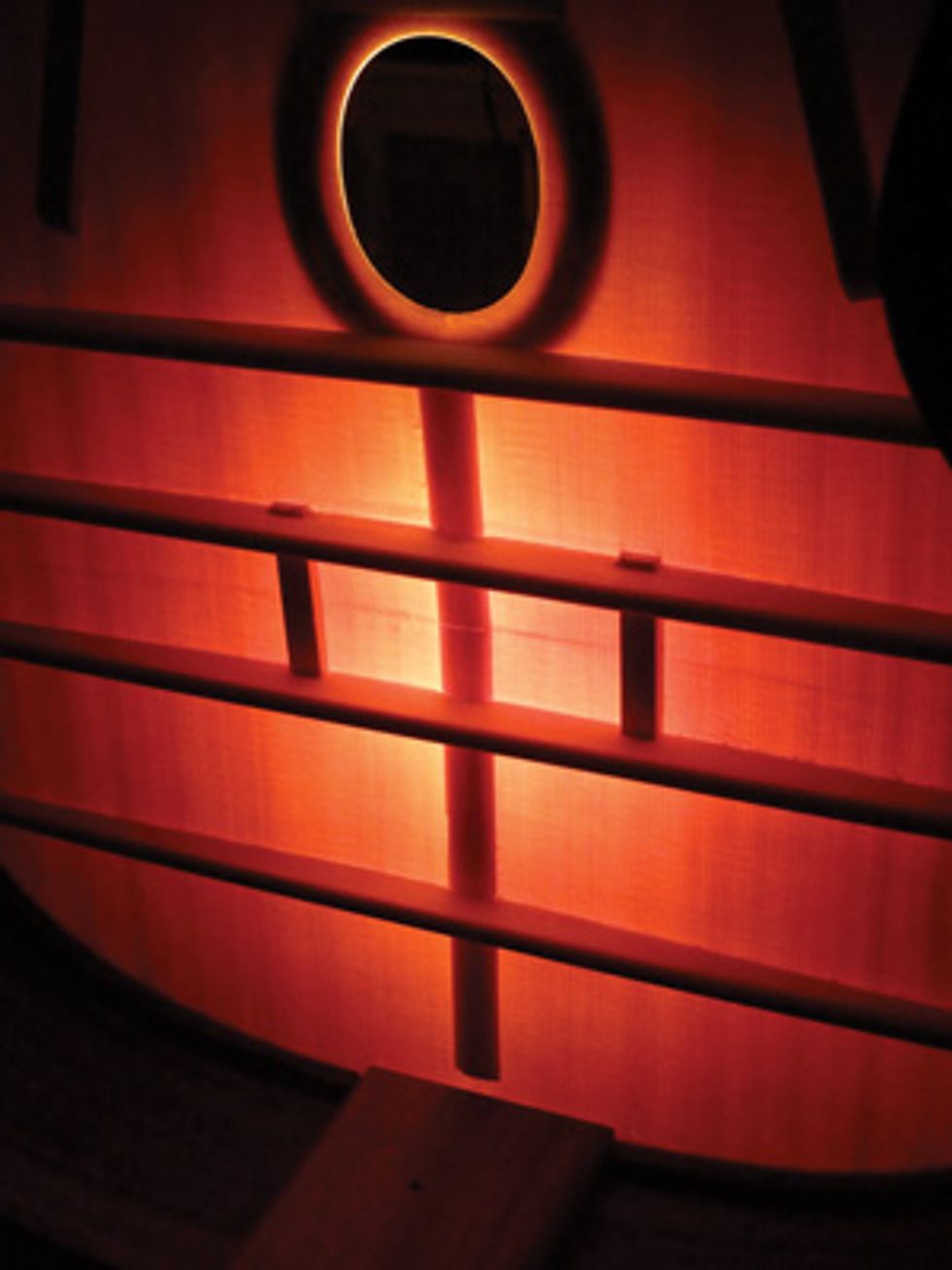
This image shows a structural light test of a Bob Holo Hotclub model. Notice the smaller braces used to help support the bridge. Photo courtesy of Bob Holo
What is it about those scores
that draws you in?
I can’t tell you. I have no idea.
There is just something about it.
You know, there is just so much
you can’t explain about music. I
don’t go too far as to say I like a
certain kind of harmony because
it’s beyond that. When you listen
to music, either something
touches you or it doesn’t. It’s not
because of the notes, the notes are
the same. It’s just something else.
Do you have aspirations
to do more movie and
soundtrack work?
As of now, people know me and
have asked me to score their
film. I don’t really have much of
a clue as to how it comes about.
There are agents that do some of
that stuff, but I don’t really have
an agent right now. It’s a tough
book to open. Usually, when
[directors] have a movie, they
want to work with someone
they already know who will do
a certain kind of score. They fall
into this security. That’s the reason
why the whole film scoring
industry is held by like, I don’t
know, 20 composers. There are
not many composers who have
access to bigger movies.
On “Voyager” you pay tribute
to what could be considered
an unlikely influence: astronomer
and author, Carl Sagan.
He translates to us the wonders
of the universe. In his books and
everything, I just think he has a
way of saying things that are so
brilliant at explaining how the
universe works. Thinking about
Voyager 1, that’s his mind. That
thing is traveling through space
right now. It’s like a mind warp.
If it hadn’t been for him, we
wouldn’t have pictures of Saturn
and Uranus. We wouldn’t have
pictures of any of the moons.
Nowadays, humanity is more concerned
about economies for themselves,
like just making money
and cheap labor instead of looking
to the stars. It just makes me
dream to think about the stars.
Was the album recorded live
in the studio?
We recorded live in the same
room without headphones. Just
live. Like really live.
How did you mic up the guitar?
I have no clue. That’s a question
for my producer. I have a few
things in my home studio, so I
know how to record my guitar
and stuff. I think he had two or
three mics.
Tell me about the guitar you
used on this album.
I used a Bob Holo Nouveau
model with a cedar top. [For
more information on Wrembel’s
guitar, read “Bob Holo on
Stephane Wrembel’s Nouveau
Guitar” on pg. 134]
What type of strings and picks
do you use?
I use D’Addario strings and a
Wegen pick.
Do you use the really thick ones?
It’s a little bit thick but not like
those huge things.
Like a 2 mm?
Yeah, I don’t even really know
the size. I recognize them
online, click on the photo, and
then buy them.
Even though your music has
its roots in Django’s music,
you are pushing beyond playing
jazz standards. Do you
feel connected to Django’s
legacy or is he just one of
your influences?
The Django community,
whatever that is, is a big competition.
It’s like, “Can I play
the new lead faster than you?”
I have no clue what is going
on with all these guys—I just
like to play my music and
compose. You can hear the
influence of Django and I love
to play the acoustic guitar.
I found a good sound with
that by mixing it up with the
drums, but I don’t try to play
like Django. I am more influenced
by Pink Floyd than anything
else. My music doesn’t
really belong to any genre.
Stephane Wrembel's Gear
Guitars:
Bob Holo “Nouveau” model with a 50-year-old
Western red cedar top and Honduran rosewood/
walnut/mahogany back and sides, Gitane DG-340
Stephane Wrembel signature model (“I brought mine
in to be refretted, and I decided to leave it fretless!
So I can play it like an oud. I usually don’t play it
live—more in the studio.”)
Amps:
AER Compact 60
Strings:
D’Addario .010s with the top string changed to an .011.
You take a pretty DIY
approach to your career. What
do you have in mind for the
next album?
I am completely independent, I
don’t have a label or anything,
so I do everything myself. I put
one foot in front of the other.
Right now I am taking care of
touring behind this album, so
I would say for the rest of the
year I will tour and then I will
think about composing more. I
have a few ideas right now that
I am putting in the can, more
movie-like stuff.
Will it be in the same vein
of Origins?
I don’t know. Right now, while
I try to perform this album, I
can’t think of the next one yet.
I started to put bits of things
together, but I don’t have a definite
color yet.
gSpeaking of Pink Floyd, have
you had a chance to see Roger
Waters’ The Wall tour?
I’ve seen it 12 times—eight in
Europe and four in the States—
and I have a cool photo of him
and I because he came to see me
play last year. After that we went
out for dinner, it was really fun
and such a great experience.
YouTube It
Armed with his cedar-topped Bob
Holo Nouveau model, Wrembel
leads a quintet through “Tsunami,”
off his latest album. The band kicks
in at 2:57 as Wrembel effortlessly
unleashes some of his Djangoinspired
lines.
>
This 15-minute performance from
Wrembel’s weekly gig at Barbés
starts with some exploratory drones
but gives you an up close look at
his right-hand technique.
Fronting a trio with rhythm guitarist
Ryan Flaherty, Wrembel tackles two
of Django’s most famous compositions,
“Minor Blues” and “Swing 48.”




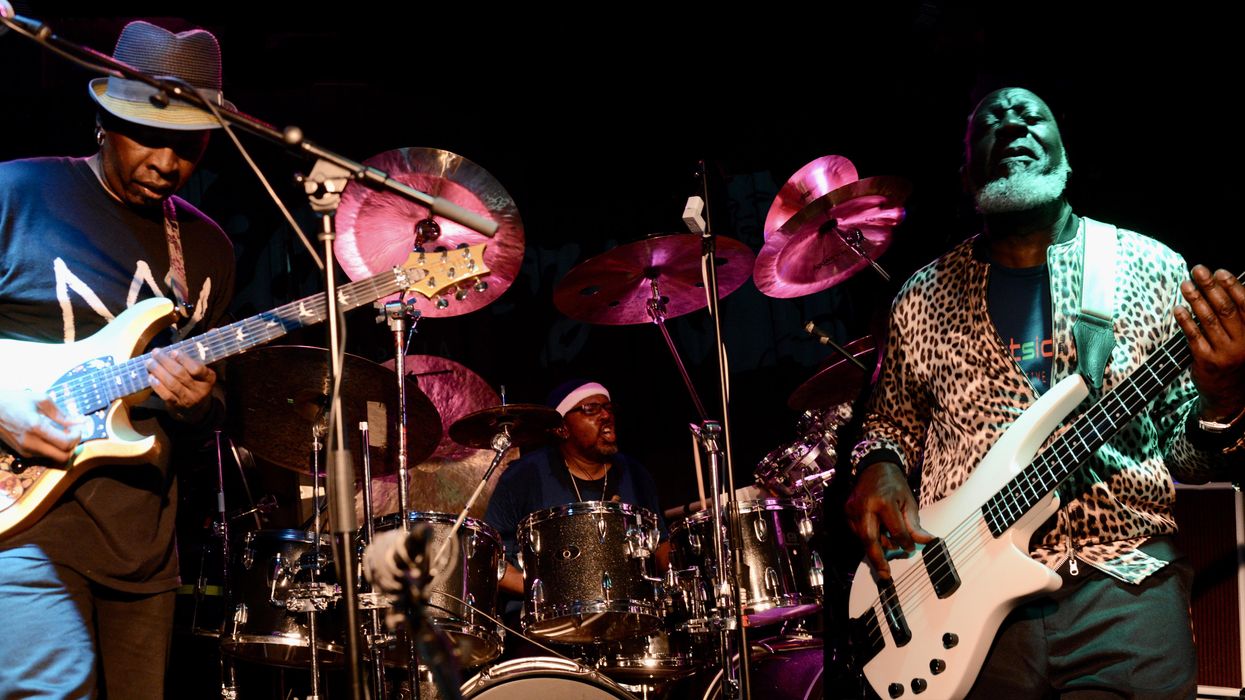
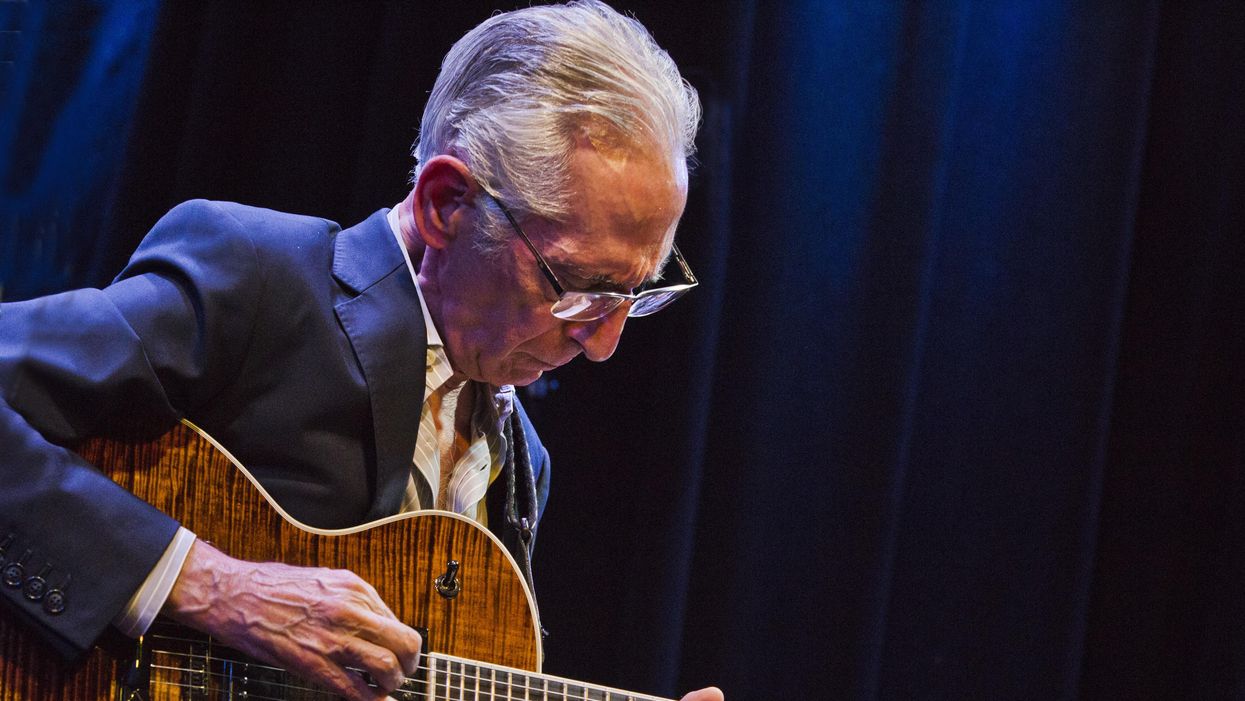



![Rig Rundown: Russian Circles’ Mike Sullivan [2025]](https://www.premierguitar.com/media-library/youtube.jpg?id=62303631&width=1245&height=700&quality=70&coordinates=0%2C0%2C0%2C0)

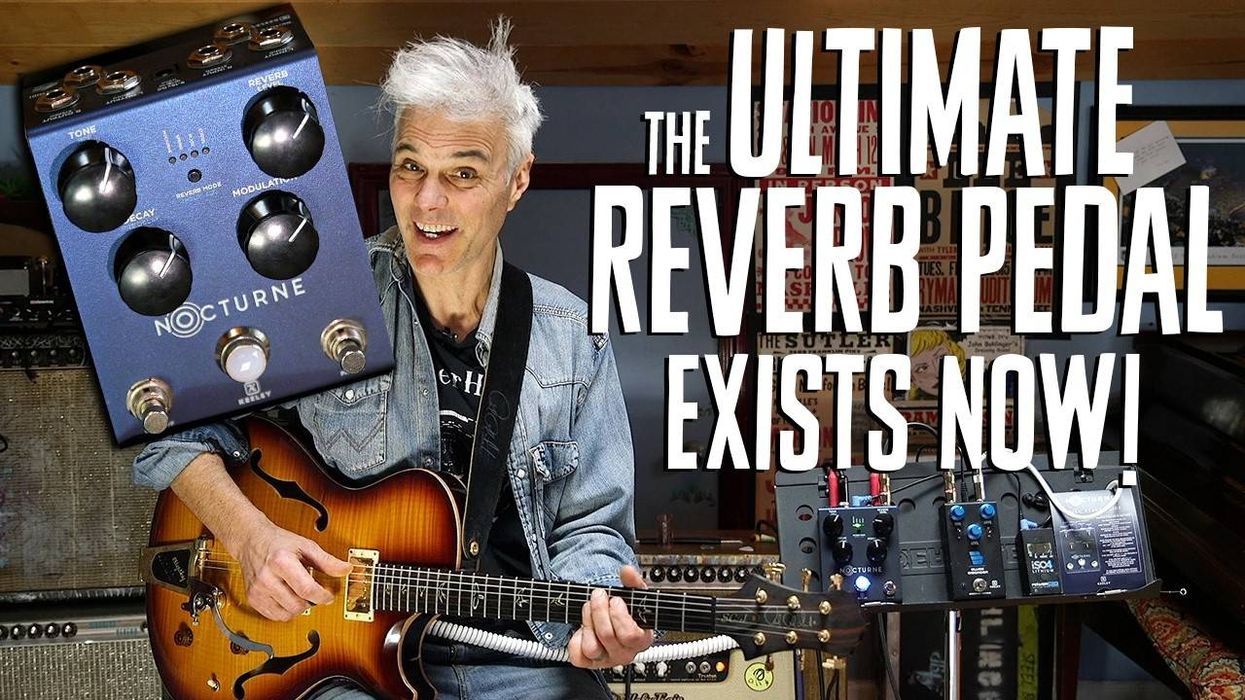

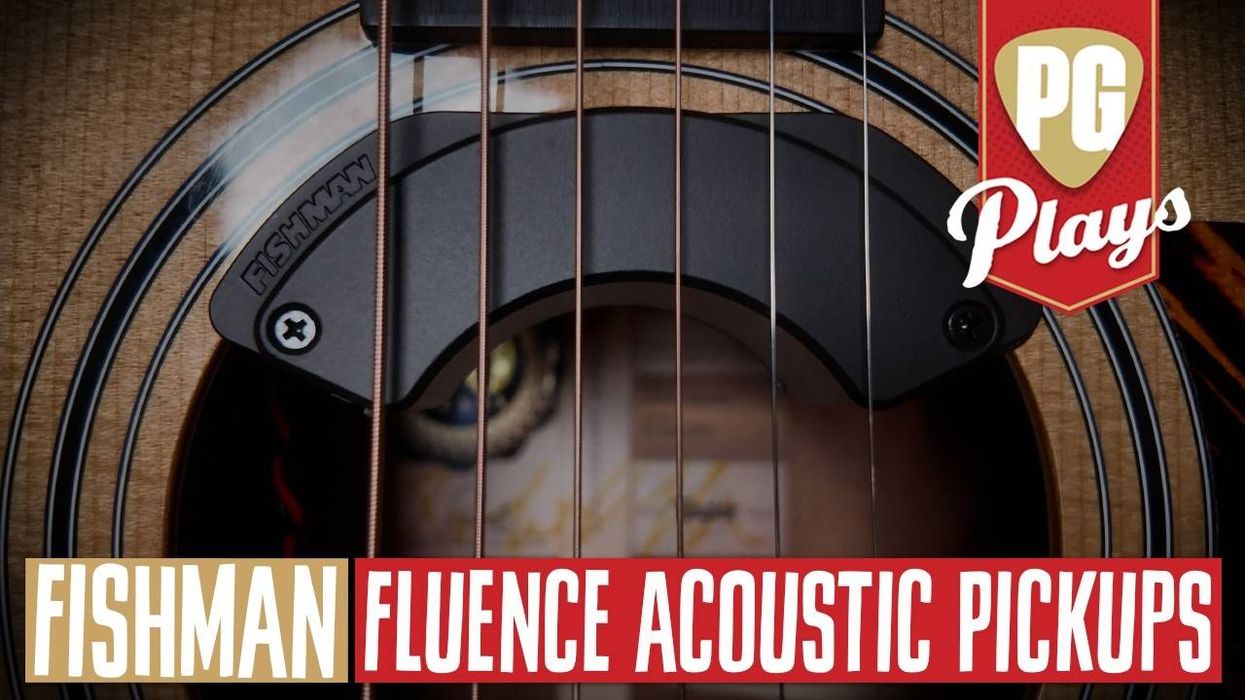
![Rig Rundown: AFI [2025]](https://www.premierguitar.com/media-library/youtube.jpg?id=62064741&width=1245&height=700&quality=70&coordinates=0%2C0%2C0%2C0)












 Shop Scott's Rig
Shop Scott's Rig







 Zach loves his Sovtek Mig 60 head, which he plays through a cab he built himself at a pipe-organ shop in Denver. Every glue joint is lined with thin leather for maximum air tightness, and it’s stocked with Celestion G12M Greenback speakers.
Zach loves his Sovtek Mig 60 head, which he plays through a cab he built himself at a pipe-organ shop in Denver. Every glue joint is lined with thin leather for maximum air tightness, and it’s stocked with Celestion G12M Greenback speakers.












![Devon Eisenbarger [Katy Perry] Rig Rundown](https://www.premierguitar.com/media-library/youtube.jpg?id=61774583&width=1245&height=700&quality=70&coordinates=0%2C0%2C0%2C0)
